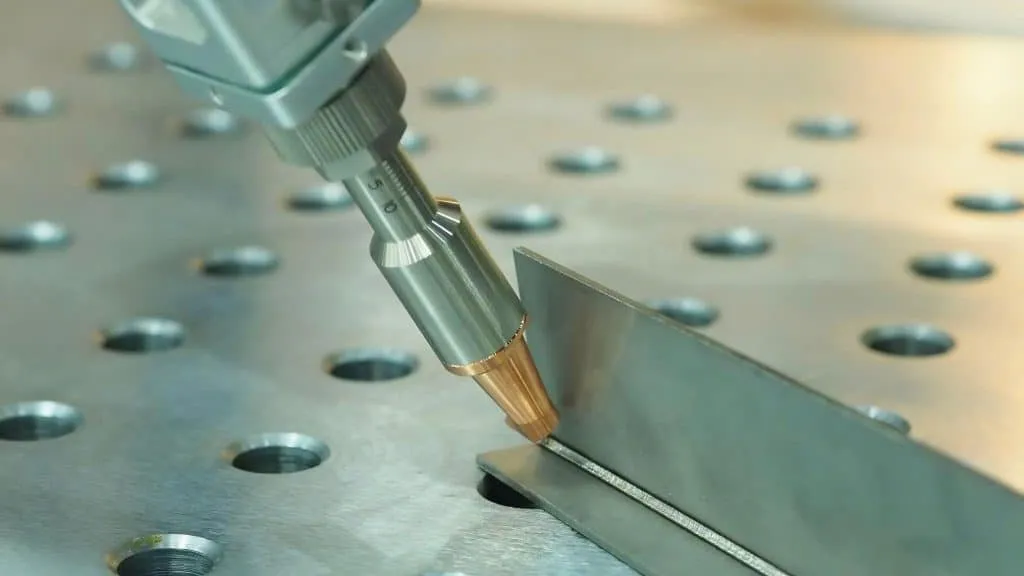
In the fast-paced world of modern manufacturing, staying competitive often comes down to two key factors: efficiency and scalability. Fabrication plants, whether large-scale operations or smaller workshops, constantly face the challenge of delivering high-quality results while keeping costs in check. This is where mid-power laser systems are changing the game. A 2kw laser welding machine in particular has emerged as a sweet spot, striking the right balance between speed, precision, and affordability.
For fabricators under pressure to boost throughput, reduce rework, and prepare for growth, these systems present a practical solution. In this article, we’ll break down how 2 kW welders are transforming fabrication environments, exploring their impact on productivity, cost savings, and long-term scalability.

Unlike lower-powered systems that may struggle with thicker materials, a 2kw laser welding machine delivers medium-depth penetration of around 1–3 mm in a single pass. This makes it an ideal fit for sheet metal fabrication, automotive components, and other industries where speed and accuracy are non-negotiable.
Key features include:
In short, a 2 kW system offers enough power to handle most day-to-day welding tasks in a fabrication plant while avoiding the excess energy costs associated with higher-powered units.
The most obvious advantage of investing in a 2 kW system is the sheer speed it brings to production lines. Traditional welding often requires multiple passes to achieve the necessary depth, but with this system, single-pass welds are the norm.
Industry benchmarks show:
This level of throughput doesn’t just save time; it frees up labor for higher-value tasks. When operators spend less time on repetitive rework, fabrication plants can deliver projects faster and take on more business without immediately expanding their workforce.
Investing in new equipment always comes with the question: does it pay off? For fabrication managers, understanding the cost dynamics of a 2kw laser welding machine helps clarify its real-world value.
While every facility’s numbers will differ, typical annual costs look like this:
Compared to traditional welding methods, these costs are relatively modest, especially when paired with higher productivity. Energy efficiency is one of the standout features of fiber lasers, ensuring plants aren’t burdened with inflated utility bills.
A strong ROI case comes from two main drivers:
When analyzed over a two- to three-year period, these savings often outweigh the upfront investment. For growing fabrication plants, the ability to scale without dramatically increasing labor or overhead makes the financial case even stronger.
One of the most compelling reasons plants are embracing 2 kW systems is scalability. Modern fabrication is no longer about meeting today’s demands, it’s about preparing for tomorrow’s growth.
This adaptability means fabrication shops can expand output capacity without needing to overhaul their entire production floor.
Every investment decision requires weighing options, and welding systems are no exception. For many fabricators, a 2 kW unit represents an optimal power-to-ROI balance. It’s powerful enough to deliver meaningful gains without the steep costs that come with high-wattage machines.
Other factors to keep in mind include:
For fabrication plants exploring this technology, Denaliweld offers tailored solutions designed to maximize both productivity and cost efficiency. Their 2 kW laser welding machine combines compact fiber-laser architecture with robust performance, making it a smart choice for manufacturers ready to scale. By aligning with the demands of modern fabrication, these systems help businesses stay competitive without overspending on oversized equipment.
The manufacturing industry is at a turning point where speed, scalability, and precision are no longer optional—they’re expected. For fabrication plants under pressure to deliver more with less, a 2kw laser welding machine provides a clear path forward. These systems don’t just boost throughput; they streamline operations, reduce costs, and create room for growth.
With consistent quality, reliable ROI, and the flexibility to scale production without overextending resources, 2 kW systems are fast becoming a cornerstone of modern fabrication strategy. As more plants embrace this level of technology, those who adopt early will find themselves better positioned to capture new opportunities and remain competitive in an evolving marketplace.
A 2 kW laser welding machine strikes a good balance between speed, precision, and affordability. It offers enough power for most daily welding tasks, provides significant productivity gains, and helps reduce operational costs, leading to a strong return on investment.
These systems boost productivity through rapid single-pass welds, achieving over 30 welds per minute and high travel speeds. This reduces the need for rework, saves time, and allows staff to focus on more valuable activities, increasing overall throughput.
Annual operational costs generally include energy (around USD 3,000-6,000), consumables (USD 1,500-7,000), and maintenance (USD 1,000-25,000). These costs are often offset by the machine's high productivity and energy efficiency.
Absolutely. Their high level of automation means staff can manage more machines, increasing output without expanding headcount. The systems offer consistent, repeatable results and are adaptable, fitting easily into current workflows or robotic cells, which supports growth without major overhauls.
2 kW laser welders are particularly effective for sheet metal fabrication and automotive components. They deliver medium-depth penetration, making them suitable for industries where speed, accuracy, and consistent quality are essential.